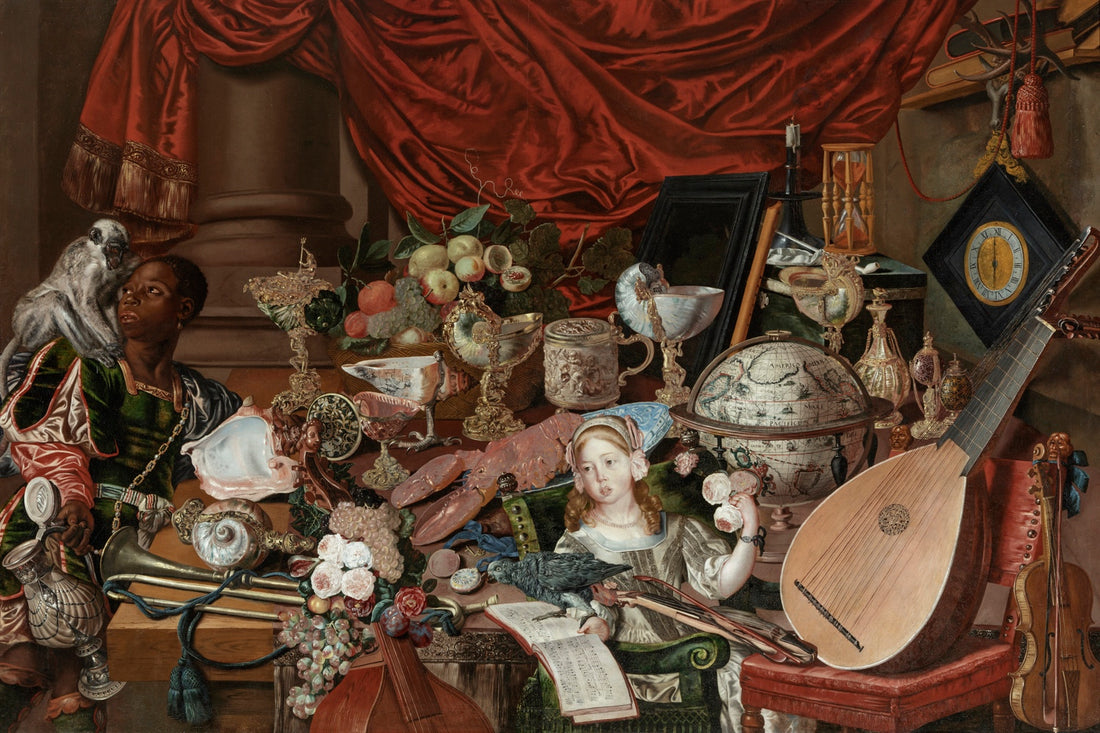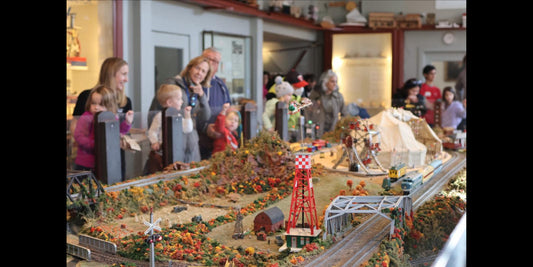The Paston Treasure, the enormous centerpiece of the Yale Center for British Art’s new exhibition The Paston Treasure: Microcosm of the Known World, is bursting at the seams with precious objects, sumptuous foodstuffs and other emblems of decadence. On first study, the only thing it seems to lack is an attribution.
Painted by an anonymous Dutch hand in 1663, the work was commissioned to catalogue the crown jewels, or, perhaps more accurately, the crown shells, of the well-to-do Paston family, which had a special preference for opalescent vessels made of polished nautilus and Strombus shells set in intricate stems of precious metal. Also included are elegant instruments and plucked flowers, a lobster sliding from its serving dish, tumbling bunches of grapes and split peaches, candles, an hourglass, a severe clock and a singing parrot, all beneath oppressive swags of red velvet.
A young white girl, Margaret Paston, sits amid the family treasure, while a young black boy with a monkey on his shoulder stands on the fringes, and the cruel suggestion—standard in the genre—is that he himself is one more curiosity worth displaying. The composition is cluttered, claustrophobic. The density of items on display, when coupled with the effects of fading paint and strange proportions, gives the impression of a collage put together by a treasure-mad magpie.
But all of its oddities make the painting more arresting. It has a foot in the genre of vanitas paintings—still lifes meant to evoke both the splendor and the fleetingness of worldly goods, evincing a “brag while you still can” mentality that many collectors shared at the time. The Paston Treasure, however, is cozier and more peculiar than other examples of the genre, some of which are displayed in the show, and also evokes questions beyond provenance: Who were the Pastons? Why were they driven to collect? What became of them and their treasure, now scattered?
Developed by a quartet of curators including YCBA’s Nathan Flis and Edward Town, the exhibition delights in the enigmatic nature of the painting and explores these mysteries of geology and artistry with an exhilarating range. Nearly 140 objects lent from private and institutional collections add glitter and context to the subject, including six pieces of treasure—three shell cups, two silver flagons and a mother of pearl flask—which appear in the painting itself.
The show travels down the winding road of Paston family history, a road that crosses paths with Milton and Shakespeare, Galileo and Egyptian pharaohs and is littered with artifacts that speak to the rich, insatiable tastes that eventually toppled the family, including a pietre dure mosaic, diamond-studded jewelry and organic oddities like carved coconuts and ostrich eggs. One of the most gripping—or biting—items on display is a massive taxidermied crocodile, which stands as snarling sentry before a portrait of the family treasure hunter, William Paston, who, as Flis says, was hungry not just for precious artifacts but for the knowledge such items could impart. In the lefthand corner of the portrait, which is set in Egypt, a crocodile has killed a man and is beginning to eat his prey, a scenic memento mori positioned against the hazy backdrop of the pyramids, where the pharaohs are entombed with their own riches.
It’s a potent image for the Pastons, which, within a generation of the painting’s creation, had fallen into dire financial straits. They were selling off their treasures one by one to repay debts, all while Robert, William’s son, labored away in his alchemical laboratory, trying to spin base metals into gold in a desperate and deluded bid to restore the family’s standing. He spent his later years in sway to fantasy, living, as one correspondent accuses, in a “castle in the ayre.”
The exhibition begins and ends with the painting itself, which does not merely bear the weight of so much added context but seems to blossom into something stranger and more compelling the more you learn about it. The curators have deftly turned the Pastons—a fairly unsympathetic family engaged in that most piratical of hobbies, hoarding treasure—into a cipher for the larger question of what survives a life and a lineage. When considering the things that have been lost to history, the anonymous painter of The Paston Treasure is only the beginning.
The Paston Treasure: Microcosm of the Known World
Yale Center for British Art – 1080 Chapel St, New Haven (map)
Tues-Sat 10am-5pm, Sun noon-5pm through May 27
(203) 432-2800
www.britishart.yale.edu/…
Written by Sorrel Westbrook. Image details: Unknown artist (Dutch School), The Paston Treasure, ca. 1663, oil on canvas, Norwich Castle Museum & Art Gallery, Norwich, UK, courtesy of Norfolk Museums Service.







